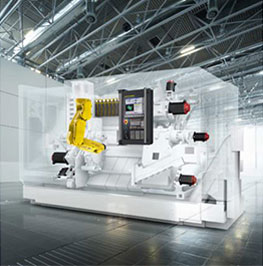
10 月 . 08, 2024 05:32 Back to list
The Principle of Hammer Mill
A hammer mill is a type of machine that is used to crush, grind, or shred various materials into smaller, more manageable pieces. This machine is widely utilized in industries such as agriculture, food processing, and recycling, where size reduction is critical. The principle behind a hammer mill revolves around the impact of high-speed rotating hammers on the material being processed.
The Principle of Hammer Mill
The process begins when the raw material is fed into the machine through a hopper. As the material falls into the grinding chamber, it is struck by the fast-moving hammers, which break it down into smaller particles. The impact force generated by the hammers is essential for the crushing process, as it disintegrates the material while simultaneously generating heat. This heat can help in further breaking down the material, particularly in softer substances like grains or feedstock.

The hammer's design plays an integral role in the efficiency of the milling process. Most hammer mills have adjustable hammer speeds and configurations, allowing operators to customize the machine to effectively handle various materials. For instance, a hammer mill designed for coarser grinds may utilize larger, heavier hammers, while one for finer grinds may use lighter hammers with a more refined screen.
A crucial aspect of the design of the hammer mill is the incorporation of a screen that defines the size of the final product. The screen allows smaller particles to pass through while retaining larger particles for further processing. By adjusting the size of these screens, operators can control the final particle size to meet specific requirements, ensuring that the finished product is appropriate for its intended use.
In addition to the efficiency in size reduction, hammer mills are valued for their versatility. They can handle a wide range of materials, including grains, wood chips, and various agricultural by-products. This versatility makes them a popular choice in numerous industries, from animal feed production to biomass energy generation.
In conclusion, the principle of a hammer mill is fundamentally about harnessing kinetic energy to achieve size reduction through impact. Its design, featuring high-speed rotating hammers and adjustable screens, allows for efficient processing of a diverse array of materials. This technology not only aids in manufacturing but also plays a vital role in waste management and recycling, showcasing its importance across various sectors.
Latest news
Unveiling the Power of Eddy Current Separator
NewsSep.25,2024
Transform Your Home Recyclin:home metal shredder
NewsSep.25,2024
The Future of Waste Management with Recycling Line Picker
NewsSep.25,2024
The Benefits of a Metal Recycling Plant
NewsSep.25,2024
Revolutionize Material Separation with Onwang Technology
NewsSep.25,2024
Innovative Waste Management: Unveiling the MSW Sorting Plant
NewsSep.25,2024